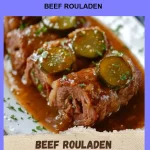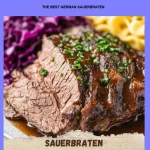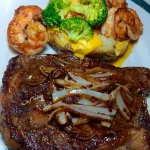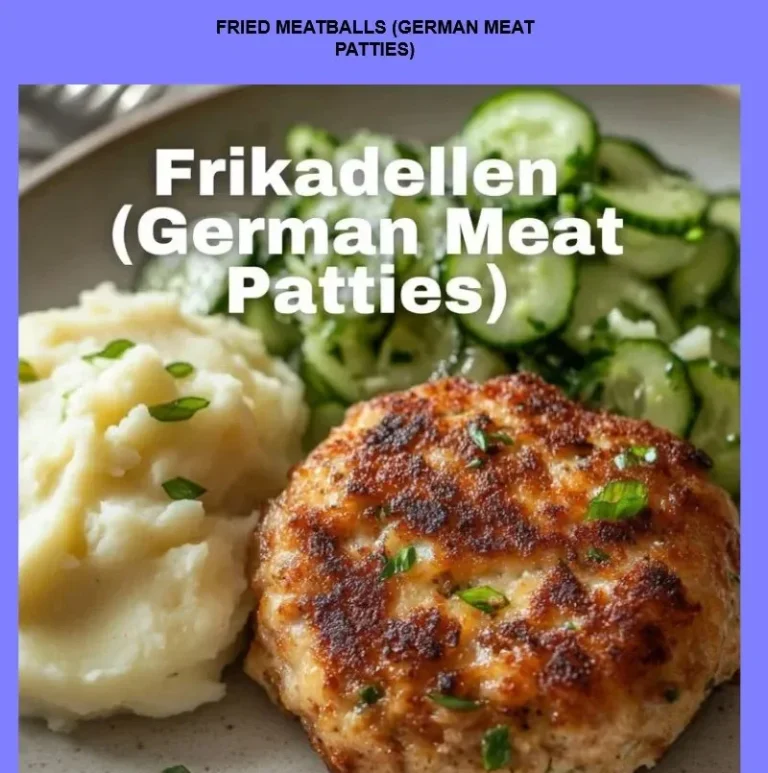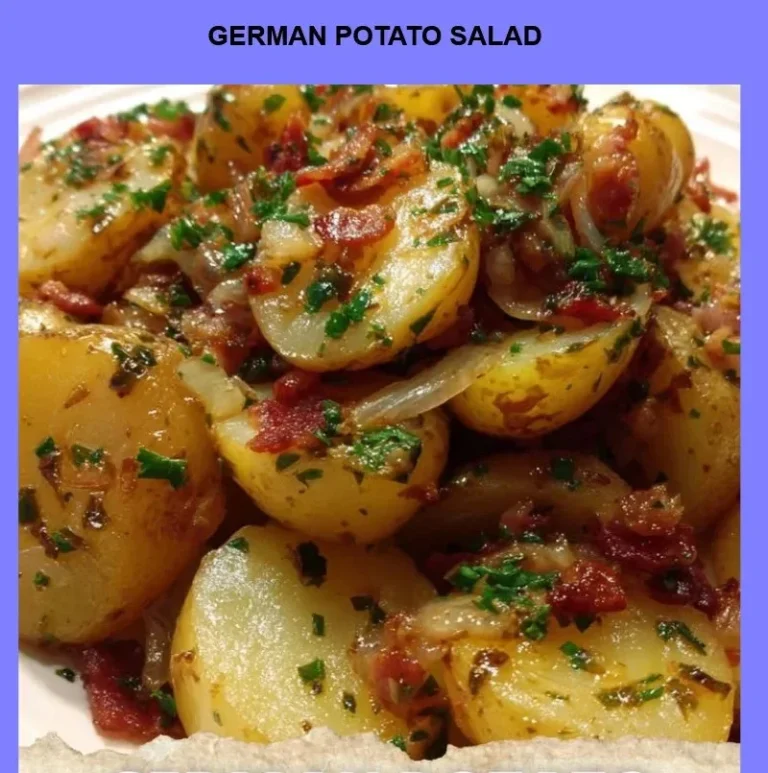German Roulades
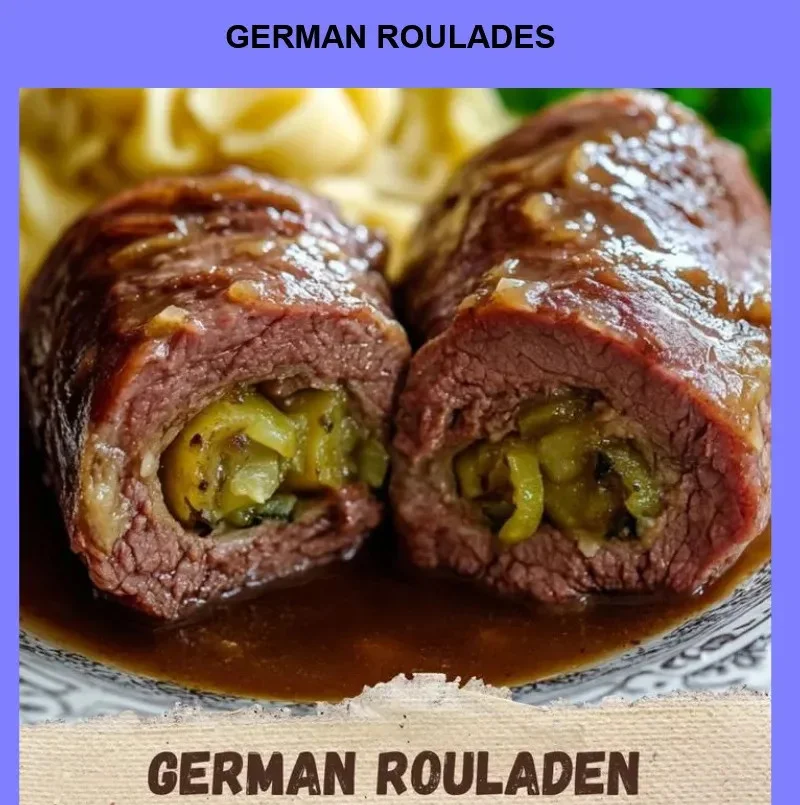

Easy, Traditional & Homemade German Roulades — A Healthy Weeknight Classic
German Roulades are one of those recipes that smell like home the moment they hit the pan. My grandmother used to make these roulades on chilly Sundays, and the whole house would fill with the warm smell of browned beef, mustard, and braised onions. This easy, traditional comfort dish—perfect as a homemade family dinner or holiday centerpiece—brings people together: a hearty bite, a slow-simmered sauce, and a plate passed around the table.
Serve German Roulades for a cozy weeknight dinner, a Sunday family meal, or as a comforting holiday main course. They’re impressive enough for guests but simple and comforting enough for busy nights.
🧂 Ingredients:
- 4 large beef rouladen (top round or thinly sliced beef, about 4–6 oz / 120–175 g each)
- Salt and freshly ground black pepper, to taste
- 2 tablespoons Dijon or German mustard
- 4 slices bacon (smoked), halved if large
- 1 large onion, thinly sliced (about 1–1½ cups / 150–200 g)
- 2 medium dill pickles (or cornichons), thinly sliced
- 2 tablespoons vegetable oil or clarified butter
- 2 tablespoons butter (optional, for richer sauce)
- 1 cup (240 ml) beef broth (low-sodium preferred)
- 1 cup (240 ml) dry red wine or extra beef broth (can substitute with non-alcoholic beef stock)
- 1 bay leaf
- 1 teaspoon dried thyme or 1 sprig fresh thyme (optional)
- 1–2 tablespoons flour or cornstarch slurry (for thickening; optional)
- Fresh parsley, chopped, for garnish
Optional for stuffing variations:
- 1 tablespoon breadcrumbs (or gluten-free breadcrumbs)
- 1 tablespoon horseradish (for a sharper flavor)
Serving suggestions:
- Mashed potatoes, spaetzle, buttered noodles, or a side of braised red cabbage
👩🍳 Directions:
- Prepare the beef: Lay each beef slice flat on a cutting board and season lightly with salt and pepper. Spread about 1 teaspoon (or to taste) of mustard evenly over each piece.
- Add fillings: Place a half slice of bacon on each piece, then add a few rings of sliced onion and 2–3 pickle slices. If using breadcrumbs or horseradish, add a small spoonful now.
- Roll and secure: Tightly roll each piece from the short end and secure with toothpicks or kitchen twine. Make sure they’re snug so the filling doesn’t fall out.
- Brown the roulades: Heat oil in a large ovenproof skillet or Dutch oven over medium-high heat. Brown the roulades on all sides — about 3–4 minutes per side — until well-colored. (Tip: don’t crowd the pan; brown in batches if needed.)
- Sauté remaining onions: Remove roulades and set aside. In the same pan, add butter and the remaining sliced onion; cook over medium heat for 4–6 minutes until soft and lightly caramelized.
- Deglaze and build the braising liquid: Pour in red wine (or extra broth) to deglaze the pan, scraping up browned bits for extra flavor. Let the wine reduce for 2–3 minutes. Add beef broth, bay leaf, and thyme.
- Return roulades to pan: Nestle the roulades back into the sauce. Bring the liquid to a gentle simmer.
- Braise: Cover the pan with a tight-fitting lid and transfer to a preheated oven at 325°F (160°C). Braise for 1½ to 2 hours, until the meat is tender and easily pierced with a fork. (Alternatively, simmer gently on the stovetop for same time.)
- Thicken sauce (optional): Remove roulades to a plate and keep warm. Strain the sauce or leave the onions if you like texture. To thicken, whisk 1 tablespoon flour with a bit of cold water (or use cornstarch slurry: 1 tbsp cornstarch + 1 tbsp cold water) and simmer for 2–3 minutes until sauce coats the back of a spoon. Taste and adjust seasoning.
- Serve: Remove toothpicks/twine, slice roulades if desired, spoon sauce over them, and garnish with chopped parsley. Serve hot with mashed potatoes, spaetzle, or your favorite sides.
Total active time: ~30–45 minutes. Braising time: 1½–2 hours.
💡 Tips & Variations:
- Low-carb option: Serve roulades over mashed cauliflower or zucchini noodles instead of potatoes. Omit breadcrumbs in the stuffing.
- Lean/healthy swap: Use turkey roulades (thin turkey breast slices) for a lower-fat version; reduce braise time slightly to avoid drying out.
- Gluten-free: Use gluten-free breadcrumbs or omit breadcrumbs altogether; thicken sauce with cornstarch instead of wheat flour.
- Vegan variation: Make “roulades” with large, thin seitan or portobello mushroom slices filled with caramelized onions, vegan bacon, and pickles. Braise in vegetable broth and a splash of red wine.
- Make-ahead: Assemble roulades and refrigerate (covered) up to 24 hours before browning and braising for easy weekday dinners.
- Freezing: After cooking, cool completely, then freeze roulades and sauce in an airtight container for up to 3 months. Thaw overnight in the fridge and reheat gently in a covered pan.
- Reheating tip: Reheat gently in a low oven (300°F / 150°C) covered with foil, or simmer gently on stovetop to avoid drying meat.
- Sauce richness: For a richer gravy, stir a small knob of butter into the finished sauce off the heat. For lighter sauce, skim fat before thickening.
- Flavor boost: Add a teaspoon of tomato paste while sautéing the onions to deepen the sauce flavor.
🩺 Health & Lifestyle Tie-in:
German Roulades can be part of a balanced, protein-rich meal—especially when served with a generous portion of vegetables. Choosing lean beef or turkey and reducing added salt helps keep this comfort food heart-friendly. Eating homemade meals like this regularly can support better nutrition and may help reduce long-term healthcare costs by preventing diet-related illness—simple, wholesome cooking is an investment in health.
❤️ Conclusion:
There’s nothing quite like the slow, satisfying comfort of German Roulades simmered until tender. Whether you make them for a cozy family Sunday or an easy weeknight dinner, they’re a delicious way to share warmth around the table. If you make this recipe, let me know in the comments or tag me on social media — I’d love to see your version!
#fblifestyle
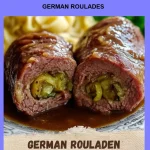

German Roulades
Ingredients
Method
- Lay each beef slice flat on a cutting board and season lightly with salt and pepper. Spread about 1 teaspoon (or to taste) of mustard evenly over each piece.
- Place a half slice of bacon on each piece, then add a few rings of sliced onion and 2–3 pickle slices. If using breadcrumbs or horseradish, add a small spoonful now.
- Tightly roll each piece from the short end and secure with toothpicks or kitchen twine. Make sure they’re snug so the filling doesn’t fall out.
- Heat oil in a large ovenproof skillet or Dutch oven over medium-high heat. Brown the roulades on all sides — about 3–4 minutes per side — until well-colored. (Tip: don’t crowd the pan; brown in batches if needed.)
- Remove roulades and set aside. In the same pan, add butter and the remaining sliced onion; cook over medium heat for 4–6 minutes until soft and lightly caramelized.
- Pour in red wine (or extra broth) to deglaze the pan, scraping up browned bits for extra flavor. Let the wine reduce for 2–3 minutes. Add beef broth, bay leaf, and thyme.
- Nestle the roulades back into the sauce. Bring the liquid to a gentle simmer.
- Cover the pan with a tight-fitting lid and transfer to a preheated oven at 325°F (160°C). Braise for 1½ to 2 hours, until the meat is tender and easily pierced with a fork. (Alternatively, simmer gently on the stovetop for the same time.)
- Remove roulades to a plate and keep warm. Strain the sauce or leave the onions if you like texture. To thicken, whisk 1 tablespoon flour with a bit of cold water (or use cornstarch slurry: 1 tbsp cornstarch + 1 tbsp cold water) and simmer for 2–3 minutes until sauce coats the back of a spoon. Taste and adjust seasoning.
- Remove toothpicks/twine, slice roulades if desired, spoon sauce over them, and garnish with chopped parsley. Serve hot with mashed potatoes, spaetzle, or your favorite sides.

